The Nova Physics Group Memory Player
| Sweet, sweet memories…. |
|
|
|
December 2006 |
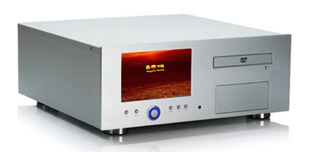 The Nova Physics Group Memory Player has arrived, and it has changed my opinion of digital playback in the home, as well as the opinions of a number of my fellow audiophiles whose ears I trust implicitly. The Memory Player was conceived by former Melos Audio designers Mark Porzilli and George Bischoff—makers of the gargantuan Nearfield Pipe Dream loudspeaker. Rod Handley, a wonderful gent whom I met at the recent Denver Rocky Mountain Audio Fest, puts the Group in Nova Physics as the third and final partner.
The Nova Physics Group Memory Player has arrived, and it has changed my opinion of digital playback in the home, as well as the opinions of a number of my fellow audiophiles whose ears I trust implicitly. The Memory Player was conceived by former Melos Audio designers Mark Porzilli and George Bischoff—makers of the gargantuan Nearfield Pipe Dream loudspeaker. Rod Handley, a wonderful gent whom I met at the recent Denver Rocky Mountain Audio Fest, puts the Group in Nova Physics as the third and final partner.
![]() Since earning a “Publisher’s Choice Award,” emails from all over the world have been arriving, inquiring about the Memory Player’s performance and availability. Each time I responded with “review forthcoming.” Internet chat rooms have heated up as the Memory Player’s claimed technical virtues have been debated. Very seldom has the introduction of a product generate this much response.
Since earning a “Publisher’s Choice Award,” emails from all over the world have been arriving, inquiring about the Memory Player’s performance and availability. Each time I responded with “review forthcoming.” Internet chat rooms have heated up as the Memory Player’s claimed technical virtues have been debated. Very seldom has the introduction of a product generate this much response.
Well, the “forthcoming review” has arrived, so please read on.
After the initial introduction of the digital CD format, it quickly became obvious that CDs were not providing the promised “perfect sound forever.” Improvements accrued with our understanding (and discovery) of the problems of reproducing audio in digital format. And the past five years have seen tremendous growth in the quality of digital playback. There’s no question that recent players and converters have been well-received by audiophiles and press alike.
With the advent of larger hard disc storage capacity in smaller packages, digital music servers (as well as the ubiquitous iPod) hit the scene with staggering results. There are now music servers costing many thousands of dollars beginning to surface in the homes of audiophiles, such as the Squeeze-Box, Olive and VRS.
In appearance the Nova Physics Group Memory Player looks nothing more than a one-box PC with a built-in touch-screen LCD. On/off buttons on the front panel control power standby for the main unit, and for the display. The rear of this transport-only unit has an XLR output, on/off main power switch, a BNC connector for an external word clock, and a standard IEC power connector. A relatively inexpensive PC laptop comes at an additional $600 (or you can install the software on your existing laptop) for remote control. The Memory Player’s operating system is rather crude compared to mainstream music servers that have every sort of gizmo available at the click of a button. There won’t be any mistaking this unit as the latest offering from the folks at Microsoft! That said, what lies behind the Memory Player has nothing to do with its looks: sheer musical performance is the genius behind the Memory Player.
“Read-until-Right” is the principle that lies at the heart of the Nova Physics Group Memory Player and that enables it to achieve its stunning sonic effects. When a CD is placed in the Memory Player, the laser will first read the disc like any other CD player, but what distinguishes the Memory Player is what happens when the laser encounters a hard to read spot on the disc (and this happens hundreds or even thousands of times per disc, either from dirt, scratches, surface imperfections or eccentricity). A standard CD player at this point will introduce Error Code Correction or Error Concealment Correction (ECC) and Parity Bits. The Memory Player disables ECC and Parity Bits and engages its Read-Until-Right (RUR) and Dynamic Laser Positioning (DLP) software. RUR attempts to retrieve the original information on the disc by engaging its DLP that repeatedly shifts the laser angle. Only when the information can’t be extracted after hundreds of attempts do Error Code Correction and Parity Bits kick in, creating as perfect a theoretical facsimile of the missing information as possible, as in standard CD players.
The Memory Player’s purported theoretical inner workings were met with claims to the contrary. Certain well heeled audio journalists labeled the Nova Physics Group white paper so much as hogwash. And based solely on this document, they said, the Memory Player could not make an audible difference! But, interestingly enough, the journalists making these claims had not heard the Memory Player. I have.
The one thing on which there is general agreement is that CD reproduction is far from perfect sounding. Porzilli and Bischoff, the Nova Physics Group founders, point to the extraction mechanism as being more culpable than the media. And both pondered at length as to why removing ECC and Parity Bits actually increased sonic excellence. I highly recommend reading their latest white paperhere.
Operating the Memory Player is quite straightforward, though I would hope potential users possess, at the very least, a rudimentary understanding of computers. If you’re reading this review, you’re using a computer, and therefore should have no problems whatsoever.
Navigating through the LCD screens can be intimidating and even frustrating at first. But I had a generally easy time getting the Memory Player up and running, and I wouldn’t qualify myself as a computer geek. Savvy computer experts who want lossless hi-rez music should rejoice in the Memory Player’s ability to store and playback hundreds songs, and the user’s ability to play them with a few touches of their fingertips.
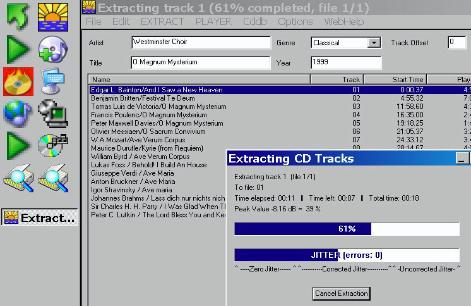
When a CD is loaded, it’s read directly onto the Memory Player’s flash memory stick, which can hold 2 gigs of data, or up to two CDs, with an average extraction time between seven and ten minutes per disc (faster drives are optionally available). It is during this initial operation that Read-Until-Right and Dynamic Laser Positioning come into play. Once loaded, the data can then be opened in the Memory folder; the folder can then be dragged onto the Memory Player’s Playlist. It is from the Playlist window that the Play, Stop, Reverse, Forward and Pause buttons are functional. The Playlist is where users will spend the majority of their time. Actually saving your loaded music requires the use of the Memory Player’s internal hard drive, available in different sizes. Standard is 50 gig (80 CDs), or you can upgrade to a 300 gig drive (600 CDs). The Icons located on left side of the screen (photo above) provide easy access to folders like the hard-drive, playlist and extraction window.
Burning CDs from the Memory Player is a feature I found myself using quite a bit during the review period. Recording CDs directly from its internal memory stick has sonic advantages that in many ways proved how sound the Memory Player performs in theory. What I mean by this is: In the context of my system, unless you’re deeply familiar with each component, it’s very hard to determine what’s doing what. Therefore, I’ve burned plenty discs from the Memory Player and had given them to those who questioned the Memory Player’s performance in light of the mighty Behold electronics and DALI loudspeakers sharing the same space. Well, on conventional players they confirmed, the burned discs were actually superior sounding to the original. Go figure.
The business of reviewing isn’t always easy. I’ve lived with many different players/transports in my audiophile life, the more memorable performers coming from such esteemed brands as Electrocompaniet, Esoteric, Zanden, Gryphon, Reimyo and Wadia. My personal enjoyment of these machines has been immense, and each unit had individual strengths that would inevitably be put to the test whenever a newer, and potentially superior, component appeared. This experience has taught me what to expect from digital in general (and digital amplification in particular). And I can say unhesitatingly that the Nova Physics Memory Player is the most musical and indefatigable CD player I’ve heard.
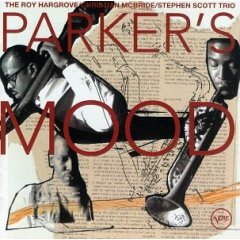 The Memory Player is the only player I’ve ever owned where the first song heard was indelibly tattooed onto memory: Star Eyes from the excellent 1995 trio recording featuring Roy Hargrove, Christian McBride and Steven Scott from Parker’s Mood [Polygram B046ZS]. It is very rare that a component, any component, leaves an unforgettable impression on nearly everyone who chances an audition. I was told by Bischoff that more than a dozen orders for the Nova Physics Memory Player were placed after listening sessions here were concluded. Of these, five were Stereo Times writers Greg Petan, Lew Lanese, Don Shaulis and Dennis Parham (new to the team) and of course, yours truly. This is unprecedented in my experience, particularly for a product that retails for $10,000! It was a relief to know I was not the only person placed under the spell of this hypnotic machine!
The Memory Player is the only player I’ve ever owned where the first song heard was indelibly tattooed onto memory: Star Eyes from the excellent 1995 trio recording featuring Roy Hargrove, Christian McBride and Steven Scott from Parker’s Mood [Polygram B046ZS]. It is very rare that a component, any component, leaves an unforgettable impression on nearly everyone who chances an audition. I was told by Bischoff that more than a dozen orders for the Nova Physics Memory Player were placed after listening sessions here were concluded. Of these, five were Stereo Times writers Greg Petan, Lew Lanese, Don Shaulis and Dennis Parham (new to the team) and of course, yours truly. This is unprecedented in my experience, particularly for a product that retails for $10,000! It was a relief to know I was not the only person placed under the spell of this hypnotic machine!
The sonic character of the Memory Player reads like an oxymoron: buttery soft and voluptuous where it needs to be, while simultaneously astonishingly fast and detailed. Euphonically colored it is not, ruthlessly see-through it is. Massed strings, no matter what the transport, have always sounded, well, like massed strings. Not so with the Memory Player. It differentiates individual players among scores of musicians like nothing I’ve heard previously. Another astounding sonic feature of the Memory Player is no matter the volume, size, complexity or musical genre, if the recording is well made, the sound never becomes hard and/or glare-ridden.
It is easy to wax poetic on the virtues of this machine, but harder to explain why the Memory Player possesses such attributes. Clearly, though, if removing ECC and Parity Bits offer these profound sonic benefits then it should be certainly worth further evaluation and discussion.
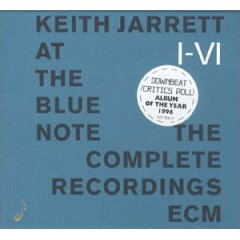 Perhaps the Memory Player’s most salient quality is its bass performance. Improvements in the upright bass, whether being plucked on a jazz set or bowed in a classical performance, were unmistakable. In a word, clarity, to such a degree that for the first time I got a sense of the fingering method, and more importantly, the complexity of, for example, bassist Gary Peacock’s playing on the legendary six-disc box set Keith Jarrett at the Blue Note. This set possesses rare qualities, being one of the most excitingly hip and happening jazz trios in a “live” recording by perhaps the best recording engineer in the business, Jan Erik Kongshaug. I have long considered this set one the most glorious in my collection (Downbeat gave it “Recording of the Year” in ’96). On “Don’t Ever Leave Me,” Peacock’s performance is unforgettable. Drummer Jack DeJohnette’s cymbal accents highlight and add greater illustration and beauty to this melancholy performance. If ever there was a single product to come along and endow the listener with the feeling, mood, and sentiment that exists in this piece, it’s the Memory Player. Its ability to renew the very color, nuance and fundamental shadings of this masterful trio’s recording is simply extraordinary.
Perhaps the Memory Player’s most salient quality is its bass performance. Improvements in the upright bass, whether being plucked on a jazz set or bowed in a classical performance, were unmistakable. In a word, clarity, to such a degree that for the first time I got a sense of the fingering method, and more importantly, the complexity of, for example, bassist Gary Peacock’s playing on the legendary six-disc box set Keith Jarrett at the Blue Note. This set possesses rare qualities, being one of the most excitingly hip and happening jazz trios in a “live” recording by perhaps the best recording engineer in the business, Jan Erik Kongshaug. I have long considered this set one the most glorious in my collection (Downbeat gave it “Recording of the Year” in ’96). On “Don’t Ever Leave Me,” Peacock’s performance is unforgettable. Drummer Jack DeJohnette’s cymbal accents highlight and add greater illustration and beauty to this melancholy performance. If ever there was a single product to come along and endow the listener with the feeling, mood, and sentiment that exists in this piece, it’s the Memory Player. Its ability to renew the very color, nuance and fundamental shadings of this masterful trio’s recording is simply extraordinary.
 The Memory Player’s spatial acuity is also surprising. It can sort out the most complicated passages in recordings such as Reference Recordings’ Requiem and Five Anthems [RR 57 HDCD] andTestament. Massed voices were transformed into multi-tiered layers with incredibly precise and articulate diction and intonation. Ditto even small jazz trios, where microphone placement gives a precise sense of where performers were standing. The Memory Player creates a sonic landscape that is wider, deeper and much more lifelike. And what the Memory Player does for great male vocalists from yesteryear is mind-boggling. Joe Williams, Andy Bey, Johnny Hartman, Lou Rawls and Mark Murphy, sing in way that got my appreciation soaring higher the more I listened. Ditto female legends Ella, Sarah, Shirley Horn, Betty Carter and the underrated Morgana King.
The Memory Player’s spatial acuity is also surprising. It can sort out the most complicated passages in recordings such as Reference Recordings’ Requiem and Five Anthems [RR 57 HDCD] andTestament. Massed voices were transformed into multi-tiered layers with incredibly precise and articulate diction and intonation. Ditto even small jazz trios, where microphone placement gives a precise sense of where performers were standing. The Memory Player creates a sonic landscape that is wider, deeper and much more lifelike. And what the Memory Player does for great male vocalists from yesteryear is mind-boggling. Joe Williams, Andy Bey, Johnny Hartman, Lou Rawls and Mark Murphy, sing in way that got my appreciation soaring higher the more I listened. Ditto female legends Ella, Sarah, Shirley Horn, Betty Carter and the underrated Morgana King.
Comparisons…
Listening to music from different transports ranging from Behold Electronics CD768 to the highly revered Wadia 270 SE proved just how much things had changed on the digital front. While the Behold and Wadia sounded delightful, there was sonic shift to the sound that inevitably proved something missing. The bass via these conventional players has significant fuzziness in the 70 to 100 Hz range, a phenomenon I would have had problems accepting had I not personally compared them side by side. Comparisons such as this ALWAYS reveal the phenomenon of removal first, exposure second.
Once exposed, it is more apparent what has happened to the music. On the Memory Player everything sounds clearer, more tonally and spatially correct in a way that is invariably more mesmerizing. The true-to-life perspective becomes increasingly more apparent. On the Wadia or Behold you get musically taken away, but to a lesser degree than on the Memory Player.
Finally, there’s a certain quality that exists in both the Wadia and Behold players that simply vanishes in the Memory Player. The closest I can come to describing this quality would be the analogy of turning up the contrast on your television. This higher contrast in the Wadia or Behold don’t make them sound brighter necessarily, they simply don’t provide the full authenticity or the rich and textured tints of real instruments to the degree the Memory Player can.
Taking this Show on the Road…
One of the first things I did when I got the Memory Player was call reviewers living around here, as well as audiophile friends who are also serious jazz musicians. Each stated pretty much the same thing using different words after extended auditioning: The best they’d heard! You can read their testimonials on the Nova Physics Group website here.
I next took the Memory Player show on the road. First up was a major audiophile recording studio in New York City to see how it would compare against their professional house machines. Believe it or not, the president of this label, a friend and an audiophile, was quite excited. Resting side by side next to a high-end transport from Theta Digital using a very expensive digital to analogue converter, the Memory Player clearly outperformed studio house masters! All I recall he and his engineers saying, as I was packing up the Memory Player and heading for the nearest exit, was “how can this be?”
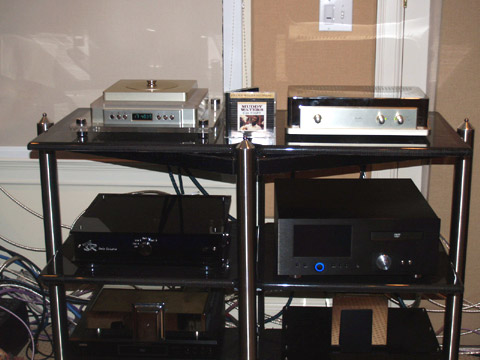
Next up was a fully loaded Memory Player with its own 32-bit tube DAC and internal volume control going up against the $42,000 digital stack from Zanden Audio (photo above). This fully loaded Memory Player belonged to another writer who had invited me over to hear his rig. 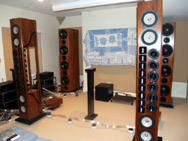 It was more coincidental than planned that at the same time, another audiophile with serious industry credentials wanted to hear this unit. In addition to having a front-end consisting of the Zanden transport and DAC, he also had the new German ASR amplifiers and the BIG NOLA reference loudspeakers. I had a good idea of what to expect, having owned a Zanden myself. Yes, to answer your question, I was a tad nervous. Regardless of how good a component is, it is very hard to imagine getting identical results in different locations.
It was more coincidental than planned that at the same time, another audiophile with serious industry credentials wanted to hear this unit. In addition to having a front-end consisting of the Zanden transport and DAC, he also had the new German ASR amplifiers and the BIG NOLA reference loudspeakers. I had a good idea of what to expect, having owned a Zanden myself. Yes, to answer your question, I was a tad nervous. Regardless of how good a component is, it is very hard to imagine getting identical results in different locations.
Once we got the two side by side, it only took four songs give or take, to prove that as good as the Zanden combo was (and I must reiterate it’s a world class product I could happily live with), it could not reproduce the music in the way the Memory Player could.
Again, it goes back to what I can only describe as contrast and tint. Wonderful but unfamiliar music loaded on the Memory Player, and played back through the Zanden combo, showed why this music lover chose these products to begin with. The music was resoundingly open, musical and palpable with an incredible low-end presence. Surprisingly, the Memory Player opened up the soundstage both laterally as well as front to back, showing a greater sense of low-end wallop and detail up and down the frequency spectrum. But, in the end it was the authenticity of the instruments that won us all over. At the end of this comparison, the Zanden owner, after a very long pause and without a single utterance from myself or the Memory Player owner said, “This is an marvelous product, Absolutely remarkable.” It was obvious he didn’t care about the financial value of components, only the musical value. (Far too often I see property and prestige take precedence over sonic performance. Many audiophiles purchase high priced systems reviewed over and over in the audio press because they only want to be associated with gear that’s respected. This of course, is total BS. It was refreshing to witness performance chosen over prestige. Keep in mind, I was the first reviewer in the US to own the Zanden electronics and for all the glorious things the DAC does, it couldn’t float my boat dynamically. I’m told that its $28k transport fixed that. Well, at that price it better had.)
Conclusion…
In summary, if I were forced to answer the claims of what the removal of ECC and Parity Bits offer a music lover and potential purchaser I would have to say; a super-translucent window into performances with greater dynamic ease and three-dimensional depth. Bass loses that wooly coloration that, I for one never knew was there, and replaces it with a quality pitch, definition and clarity that should startle anyone as fortunate as I was to hear this product. After hearing the Memory Player in so many different locales it would be hard to discount its manufacturers claims. Very hard.
The Nova Physics Group Memory Player has laid down the proverbial gauntlet with regard to sonic supremacy in digital playback. As far as I can ascertain, and through many exhilarating months of intense listening sessions, it appears that Porzilli and Bischoff were right after all. ECC and Parity Bits may very well be the culprit behind what ails digital to this very day. With the onslaught of computer-based music servers hitting the market, I’m certain it will only be a matter of time before the Memory Player will meet its sonic match as the competition catches up. But in the here and now the Nova Physics Memory Player stands as the standard upon which high-end digital playback will be judged.
The performance of the Memory Player has taken the overall satisfaction of playing back music on CDs to a place I doubted possible. As I stated after my first audition…Game Over

clement perry
Read: Second Thoughts from Greg Petan
Read: Further Impressions from Don Shaulis
____________________
Specifications:
Digital Recording/Conversion:
Balanced or Single Ended XLR and RCA
(AES/EBU compliant)
Digital Input and Output:
AES/EBU (XLR), SPDIF (RCA), RCA and XLR (special order)
Digital Input Sampling Rates:
44.1khz, 48khz, 88.2khz and 96khz
Bit Depths:16bit, 24bit and 32bitClock:Extremely low jitter, one Input and one Output,all BNC including Synchronization (“Sync”) via BNC
Impedance: 75 Ohms
Input Types:Word, 256 Word, 13.5mhz and 27mhz
Output:Word
Frequency Response: 10 Hz – 92 kHz
A/D-D/A Type:
24bit multi-level, Delta-Sigma
Sampling Rates (auto-select):
44.1khz, 88.2khz, 96khz, 176.4khz, 192khz and
215khz available in all formats (Up-sampling)
Bit Depths:16, 24, and 32bit
Price of Review sample: $9,995.00
Address: Nova Physics Group
9100 East Florida Avenue
Number 21-101
Denver, Colorado 80247
U.S.A.
East Coast Division Contact Phone Number : 908-864-0093
West Coast Division Contact Phone Number: 303-459-2703
Website: www.novaphysicsgroup.com
Email: George@novaphysicsgroup.com
Email: Rod@novaphysicsgroup.com
![]()
Don’t forget to bookmark us! (CTRL-SHFT-D)
Stereo Times Masthead
Publisher/Founder
Clement Perry
Editor
Dave Thomas
Senior Editors
Frank Alles, Mike Girardi, Key Kim, Russell Lichter, Terry London, Moreno Mitchell, Paul Szabady, Bill Wells, Mike Wright, Stephen Yan, and Rob Dockery
Current Contributors
David Abramson, Tim Barrall, Dave Allison, Ron Cook, Lewis Dardick, Dan Secula, Don Shaulis, Greg Simmons, Eric Teh, Greg Voth, Richard Willie, Ed Van Winkle, and Rob Dockery
Music Reviewers:
Carlos Sanchez, John Jonczyk, John Sprung and Russell Lichter
Site Management Clement Perry
Ad Designer: Martin Perry






Be the first to comment on: The Nova Physics Group Memory Player